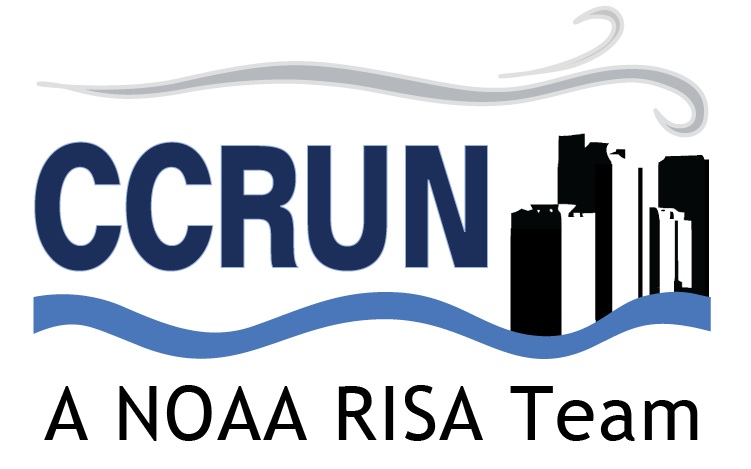CCRUN CROSS-CUTTING THEMES
Climate Science
CCRUN’S cross-cutting climate team provides the cities in the urban Northeast with the latest information on climate change and its potential impacts, and offers recommendations on climate change adaptation and resilience strategies. The climate science team researches a variety of climate hazards including: extreme temperatures and humidity, heavy downpours, droughts, and sea level rise and coastal flooding. This cross-cutting theme addresses communities’ and decision-makers’ need for relevant, useful, and timely climate information, working with regional stakeholders to build resilience to climate change.

Current Research: Climate Science Projections for New York City
CCRUN’s climate science team contributed to the recently released NPCC 2019 Report. The climate science team of the NPCC, led by CCRUN researchers, focused on six types of climate hazards: extreme heat and humidity, heavy downpours, droughts, sea level rise and coastal flooding, extreme winds, and cold snaps. The city and region are already experiencing changes in some of these events, and changes are projected to continue and worsen in the future. Some new and experimental downscaling methods were explored and compared with the previous NPCC assessments.
CCRUN coastal and climate science researchers also developed, as part of the NPCC, a new upper-end sea level rise (SLR) scenario, the ARIM (Antarctic Rapid Ice Melt) scenario, which has been introduced to raise long-term high-end risk awareness for planning purposes. This scenario includes the latest progress in modeling ice-shelf-ice sheet-ocean interactions and the possibility of initiating West Antarctic ice sheet destabilization by late century, under continued warming at high greenhouse gas emission rates.
Through continued work with Consolidated Edison (ConEd), the CCRUN climate science team advanced new methods for projections, both quantitative and qualitative, of a set of hazards the utility is concerned with for their future preparedness and planning. Specific methods were developed for projections of combined heat and humidity, precipitation, and extreme storm events, including hurricanes and nor’easters and winter storms.
Other Projects:
- Sea Level Rise Scenarios
- ConEd Preparedness Planning
- Stamford Stormwater Management
- Coastal Communities Resource Guides
Selected Publications:
González, J. E., Ortiz, L., Smith, B. K., Devineni, N., Colle, B., Booth, J. F., … Rosenzweig, C. (2019). New York City Panel on Climate Change 2019 Report Chapter 2: New Methods for Assessing Extreme Temperatures, Heavy Downpours, and Drought. Annals of the New York Academy of Sciences, 1439(1), 30–70. https://doi.org/10.1111/nyas.14007
Gornitz, V., Oppenheimer, M., Kopp, R., Orton, P., Buchanan, M., Lin, N., … Bader, D. (2019). New York City Panel on Climate Change 2019 Report Chapter 3: Sea Level Rise. Annals of the New York Academy of Sciences, 1439(1), 71–94. https://doi.org/10.1111/nyas.14006
Hall, J. A., Weaver, C. P., Obeysekera, J., Crowell, M., Horton, R. M., Kopp, R. E., … White, K. D. (2019). Rising Sea Levels: Helping Decision-Makers Confront the Inevitable. Coastal Management, 47(2), 127–150. https://doi.org/10.1080/08920753.2019.1551012
Key Stakeholders:
New York City Mayor’s Office of Resilience
NYSERDA
Consolidated Edison
Contact:
Dr. Radley Horton
